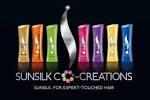1.0 Introduction
1.1 Background
This report takes an overview of the research that conducted in order to identify the preference level of customers towards Sunsilk shampoo as a brand.
When it comes to brands of shampoo in Sri Lanka, Sunsilk has been considered as Sri Lanka’s No: 01 shampoo brand for its capabilities to provide longer, smoother and straight silky hair. This brand is also the strongest brand in Asia and it is said to be available over 80 countries all over the world.
The brand’s most recent marketing campaign is the co- creation collaboration in which 7 hair experts around the world would answer to every hair issues and come up with the best solutions for the problem.
The new range of products is as follows:
*Sunsilk dream soft and smooth
*Sunsilk hair fall solution
*Sunsilk damaged hair re construction
* Sunsilk Stunning Black Shine
Sunsilk believes that the secrets to beautiful hair should not be locked behind the salon door. So they have worked with seven internationally renowned hair experts to create salon quality products for every girl, whoever she is, wherever she lives, whatever her hair type
This research was carried out to identify the customer preference for Sunsilk as a brand. Now Sunsilk is being positioned as Sri Lanka’s No: 01 Shampoo brand and this research report will help to identify he customer preference level and the significant reasons for customer preference as well as the relationship between those significant factors and the level of preference .The research findings will definitely help in designing new product mix for current and the potential customers which satisfy their needs better than ever.
1.2 Research Problem
To study customer preference level towards sunsilk shampoo.
1.3 Research Objectives
- To determine the average level of preference towards Sunsilk shampoo.
- To identify the most significant variable affect for the level of preference.
- To identify the effective reasons for the determined level of preference.
- To identify the relationship between the affected reasons and the level of preference.
- To recognize the potential benefits that customers expect from Sunsilk shampoo
1.4 Research Questions
What is the average level of preference towards Sunsilk shampoo?
What are the effective reasons for the determined level of preference?
What is the most significant variable affect for the level of preference?
What is the relationship between the affected reasons and the level of preference?
What are the potential benefits that customers expect from Sunsilk shampoo?
1.5 How You Will Benefit From This Report
Since this report provides detailed consumer insights into Sunsilk shampoo it is an invaluable resource to executives, organizations looking to make marketing decisions.
This report is an important tool to companies in the natural & organic personal care products market, as well as those looking to enter this emerging market. It provides detailed insights into consumer preference and expectations towards these products. The report gives a thorough understanding of consumer preference, enabling companies & retailers to develop marketing programmers, distribution strategies and position products.
The report is useful for CEO s and senior managers to ensure that new or existing products are correctly marketed and meet consumer expectations.
Marketing managers & executives to identify consumers needs, wants, preferences and expectations. Such information can enable successful marketing programmers and promotional activities to be developed that meet consumer hot spots.
It is also helpful for business development executives to understand the market and identify opportunities for new or existing products.
Advertising & marketing agencies working on advertising and promotional campaigns are another party who is going to be benefited through this research report. It can help reach consumer hot spots by developing targeted and effective marketing communications.
It is also beneficial for research & development executives to develop and formulate new products based on consumer’s needs and expectations.
Chapter 02
2.0 Literature review:
The literature review section reveals that the used variables are abstracts from the prevailing theories and the previous related researches. Those abstracts are clearly shown here and it supposes that this research is not biased.
Theory of Consumer Decision Making Process
This theory says that how the customers decide to purchase products. According to this theory consumers can be divided in to three categories based on their ways of decision making. They are Extensive problem solving, Limited problem solving, and Reutilized response behaviour.
At the level of Extensive problem solving, consumers need a great deal of information to establish a set of criteria to be considered when preferring for a specific brand. At the level of Limited problem solving, consumers have already established the basic criteria for evaluating various brands but they search for more additional brand information to discriminate among various brands of a product category. Reutilized response behaviour talks that consumers have experience with the product category and a well established set of criteria with which to evaluate the brands they are considering. They simply review what they already know.
Apart from that, this theory also describes four models of consumers with different views .First one is economic view .Under this view consumer is considered to be a rational person in terms of being aware of all available product alternatives and ranking those alternatives according to the benefits and advantages and identifying the best alternative.
Next, cognitive view .it says that a consumer is a problem solver. Consumers search for goods that fulfill their needs and enrich their lives
Preference Formation Model (PFM)
Preference is formed when the customer is bonded to your company through the establishment of a mutual benefit. Successful companies therefore go beyond delivery of a commodity or service; they pursue the development of a relationship with their customers. This bonded relationship will be more likely to survive competitive attacks than the mere purveying of goods or services or an over reliance on aggressive pricing models.
One of the components of the Preference Formation Process is the development of a Preference Formation Profile. This profile breaks out the required attributes of each stage of preference formation.
The profile further differentiates the required attributes of preference into emotive or functional attributes and defines each as attractor, satisfier or expectant. The PFM results in a likelihood of preference formation index (PFI) which represents the strength of preference for a given product/service. We have found that the preference formation index (a standardized score ranging from one to one hundred) can range dramatically given the market and population under consideration. When the index is weak (seventy-five or below) it means that while the elements of preference are ³in play´ there is a reasonable amount of indifference toward the preference target.
R.L. Oliver (1994) observed that customer satisfaction results from a process of internal evaluation that actively compares expectations before purchase of a product or service with perceived performance during and at the conclusion of a purchase experience. The deployment of the theory of reasoned action as a model for preference formation explains why such evaluation takes place. Satisfaction is a product of the alignment between prescribed functional and emotive performance elements and the ability of the company to meet the performance expectations. Sustained preference is a product of meeting these requirements over time.
What we have referred to as functional and emotive performance elements Oliver defines as ³evaluative elements´ (expectants, satisfiers and attractors) that, in turn, comprise a single product or service evaluative experience. Sustained preference can be thought of as a series of experience interactions that are continuously being modified as the components of preference are modified over time.
According to a research done by J. Jeffrey Inman, Leigh Mcalister, Wayne D. Hoyer (1990), the promotional price cuts and promotion signals serve as persuasive appeals in support of choosing a particular brand, the ELM model posits a continuum of the ways choice attitudes might change as a result of exposure to a promotion. At one end of the continuum, termed the central route to persuasion, the consumer diligently, actively, and cognitively evaluates information central to the particular evaluation.
Promoting a brand with both a promotion signal and a price cut will, on average, increase the likelihood that an individual will choose that brand.
The presence of a promotion makes the selection of the promoted brand more likely. Further, it seems that for some consumers, the promotion signal alone represents a sufficiently significant change in the choice condition to induce a shift in choice behavior toward the promoted brand. For some consumers, how- ever, a concomitant price cut is needed.
Gregory S. Carpenter and Kent Nakamoto (1989) explain in their research that consumer preference towards a product may differ because of the product attributes. They say that the learning process of the customers form a preference towards particular brand. First customers have a trial purchase and if the customers are satisfied with the product attribute customers repurchase the product and doing so the preference is formed. As a result, consumer preferences are likely to evolve through time, updated through heuristic judgment processes.
Leon Schiffman and Leslie Kanuk.(2009) expresses in his book consumer behavior the application of the Theory of Reasoned Action Model. The model is designed to provide a better understanding of how consumer preference is formed and, correspondingly, to provide the means to accurately predict consumer preference behavior.
The important contribution of the reasoned action model is the realization that consumers utilize the model in all purchase experiences to a lesser or greater extent. Of equal importance is the realization that the components used to make a preference decision are also the ones employed by a consumer to evaluate the performance success of the product or service purchased and the company responsible for them. Therefore, as the components of preference change, the elements influencing satisfaction change accordingly.
The relationship is dynamic and fluid therefore static or predetermined satisfaction analytic packages often miss the most important elements of preference and can create a false sense of security on the part of companies who think that since their customer satisfaction scores are high they must in turn have relatively loyal customers.
Chapter 03
3.0 Methodology:
Type of the research conducted is a descriptive research, in which the major objective is to identify and describe the level of customer preference towards Sunsilk shampoo.
The respondents who were taken in to account in terms of gathering information were randomly selected. The respondents were selected using a non probability sampling technique, which is known as convenience sampling technique. The respondents were selected based on the researcher’s convenience. The selected sample size was 50 respondents. Well prepared questionnaire was used in terms of gathering information. The questionnaire was distributed among the Sunsilk shampoo preferred customers.
3.1 Conceptualizing frame work:
Independent variables Dependent variable
Price Customer preference towards
Attribute shampoo
Need
Knowledge
Promotion
3.2 Operationalization of variables
| Concept | Variables | Indicators | Measurement |
| Customer preference towards Sunsilk shampoo
| Price | High price value for money affordable price
| Nominal scale |
| Attribute | fragrance package color
| Nominal scale | |
| Need | Smoothening of hair To prevent hair fall To avoid dandruff To reconstruct damaged hair | Nominal scale | |
| Knowledge | Experience information
| Nominal scale | |
| promotion | Advertising | Nominal scale |
Appendix:
Questionnaire
Customer’s Name:
Occupation:
Age: 10-19 20-29 30-39 40-49
1) How many times do you use Sunsilk shampoo per week? Put a tick [ ]
| Once a week | |
| Twice a week | |
| Three times a week | |
| Regular |
2) What do you think about the price levels of Sunsilk shampoo? Put a tick [ ]
| High price | |
| Normal price | |
| Affordable price |
3) What reasons affect you to prefer for Sunsilk shampoo? Rank1-8 according to your priority
| Price | |
| Fragrance | |
| Package | |
| Need satisfaction | |
| Color | |
| Ingredients | |
| Past experience | |
| Promotions |
4) Indicate your level of agreement for the following statements. Put a tick [ ]
Statement | Strongly agree | Agree | Neither agree nor disagree | Disagree | Strongly disagree |
| I like the fragrance of sunsilk very much | |||||
| The bottle of sunsilk shampoo is very convenient to use. | |||||
| I check the ingredients of sunsilk when buying |
5) What is the color of your currently using Sunsilk shampoo? ———————-
Do you like that colour? Yes No
If not, what colour do you prefer to in your shampoo? ————————
6) What do you expect by using a shampoo to wash your hair? Put a tick [ ]
| Smoothening of hair | |
| Black shiny hair | |
| To prevent hair fall | |
| To avoid dandruff | |
| To construct damaged hair |
7) How satisfied are you with Sunsilk to meet your needs that you mentioned in the
Q: (07)? Put a tick [ ].
| Very satisfied | |
| Satisfied | |
| Neither satisfied nor unsatisfied | |
| Unsatisfied | |
| Very unsatisfied |
8) What influence you to buy Sunsilk? Put a tick [ ]
| Advertising | |
| Friends and neighbors | |
| Promotion campaigns | |
| Self experience |
9) Please suggest some other benefits you prefer to have from Sunsilk in the future
———————————————-
Thank you for your favorable response
















